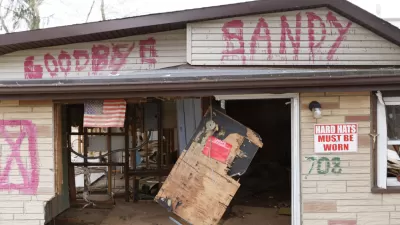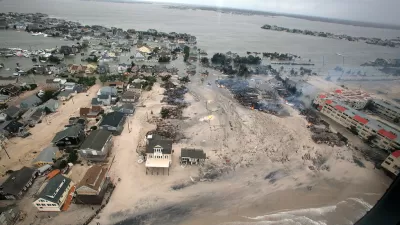The latest example of a coastal city designing urban resilience as both amenity and infrastructure—a plan to build Venice-style canals in Boston.
A report released earlier this week by the Urban land Institute Boston/New England chapter "suggests that building canals through the Back Bay neighborhood would help it withstand water levels that could rise as much as 7 feet by 2100," according to an article by Casey Ross.
"Some roads and public alleys, such as Clarendon Street, could be turned into narrow waterways, the report suggests, allowing the neighborhood to absorb the rising sea with clever engineering projects that double as public amenities."
The canal plan is one of a number of solutions proposed by the report, albeit an imaginative one. According to Ross, "[in] addition to considering canals and higher sea walls, the group called on municipalities to discuss ways to raise money to prepare vulnerable areas and alter building and zoning rules to make way for inevitable flooding."
The article is an excellent primer on the expected impacts of sea-level rise on Boston as well as the kind of public benefits that might be delivered by designing and building creative solutions to adapt coastal cities for the coming changes.
FULL STORY: Report offers ideas for a Boston beset by rising seas

Study: Maui’s Plan to Convert Vacation Rentals to Long-Term Housing Could Cause Nearly $1 Billion Economic Loss
The plan would reduce visitor accommodation by 25,% resulting in 1,900 jobs lost.

North Texas Transit Leaders Tout Benefits of TOD for Growing Region
At a summit focused on transit-oriented development, policymakers discussed how North Texas’ expanded light rail system can serve as a tool for economic growth.

Why Should We Subsidize Public Transportation?
Many public transit agencies face financial stress due to rising costs, declining fare revenue, and declining subsidies. Transit advocates must provide a strong business case for increasing public transit funding.

How to Make US Trains Faster
Changes to boarding platforms and a switch to electric trains could improve U.S. passenger rail service without the added cost of high-speed rail.

Columbia’s Revitalized ‘Loop’ Is a Hub for Local Entrepreneurs
A focus on small businesses is helping a commercial corridor in Columbia, Missouri thrive.

Invasive Insect Threatens Minnesota’s Ash Forests
The Emerald Ash Borer is a rapidly spreading invasive pest threatening Minnesota’s ash trees, and homeowners are encouraged to plant diverse replacement species, avoid moving ash firewood, and monitor for signs of infestation.
Urban Design for Planners 1: Software Tools
This six-course series explores essential urban design concepts using open source software and equips planners with the tools they need to participate fully in the urban design process.
Planning for Universal Design
Learn the tools for implementing Universal Design in planning regulations.
Ascent Environmental
Borough of Carlisle
Institute for Housing and Urban Development Studies (IHS)
City of Grandview
Harvard GSD Executive Education
Toledo-Lucas County Plan Commissions
Salt Lake City
NYU Wagner Graduate School of Public Service




























